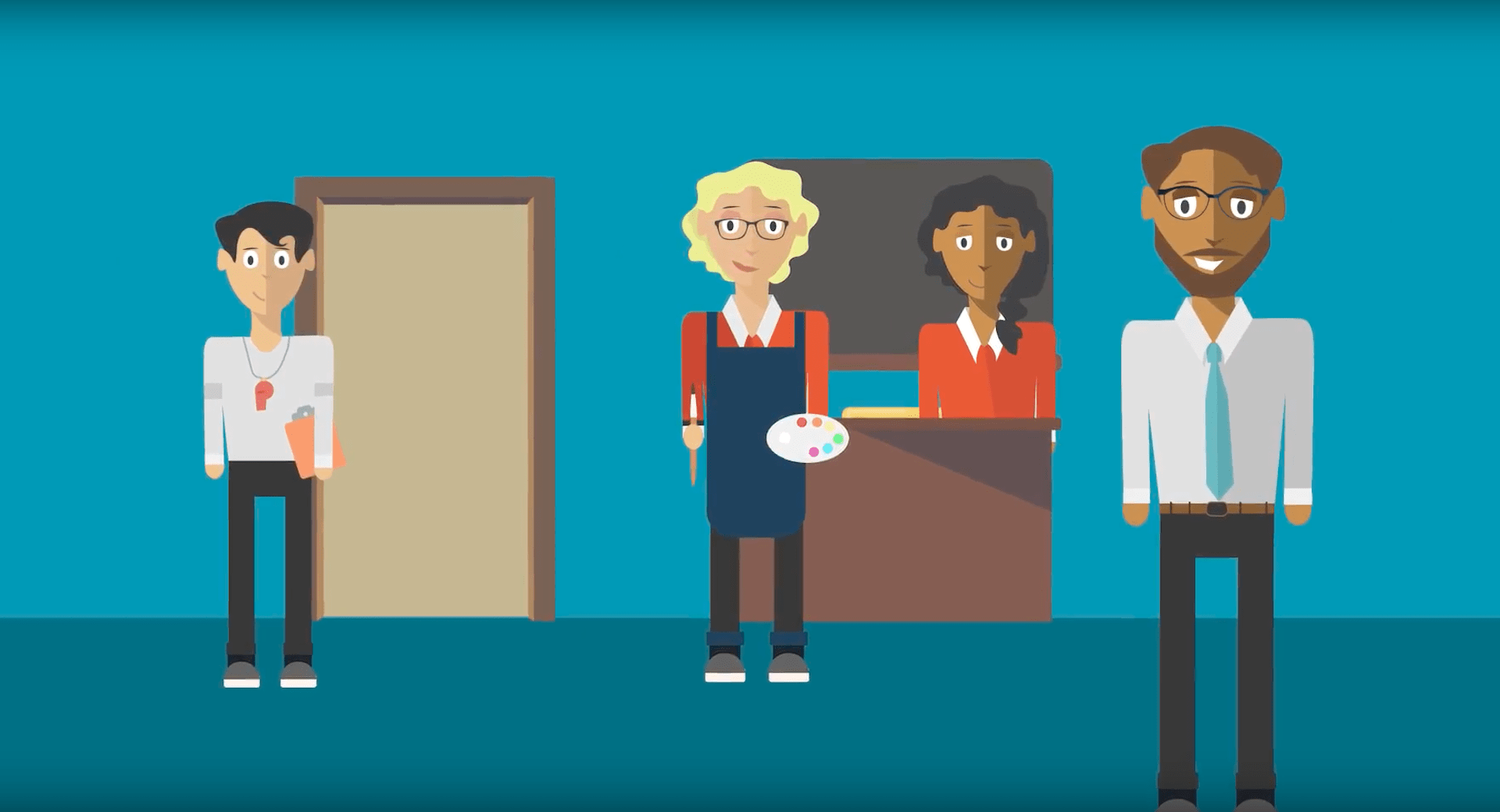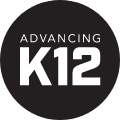
"Engineers are not the only professional designers. Everyone designs who devises courses of action aimed at changing existing situations into preferred ones."
– Herbert Alexander Simon, Nobel Prize laureate
What does it mean to be a “visionary” leader? Perhaps there is more to the aesthetic connotation of the word than meets the eye. Maybe, just maybe, every visionary leader is simply a world-class designer on a different career path.
Design thinking offers school leadership teams a label for a methodology many have already adopted on the path to continuous improvement. A design mindset is defined by the ongoing, incremental, and repeatedly validated quest for better experiences — both internally and externally.
Although the exact, step-by-step methodology differs based on who you ask, design thinking can be broken down into a few common themes. Let’s see how each of those might be applied to the challenges faced by a typical school leader.
“[Design] is not just what it looks like and feels like. Design is how it works.”
– Steve Jobs, Apple co-founder
1) Identify and define
Inquiry is at the heart of design thinking. Experience is important, but no leader should rely on his or her own opinion as the sole source of innovation or process improvement. In design thinking, a deep understanding of the stakeholders, the environment, and the problem itself is crucial.
Example: Long lunch lines
As school capacities continue to be stretched, the process of feeding students in a timely manner has become a challenge. It’s important to dig beyond the most obvious symptom (long lines result in not enough time for students to eat) to get to the root of the problem.Questions to ask:
- Are there any obvious bottlenecks in the process?
- Are the same problems consistent in every lunch period, or do they vary based on timing?
- What are the typical lunch options?
- What are the most common lunch combinations?
- Are students making decisions about what to eat based on how quickly they can get through?
- Is there room to make any physical changes to traffic flow?
- Is there room to improve the checkout process?
- What impact do exceptions (i.e. negative balances, special dietary requests, or behavior incidents) have on the process?
- What are the key benchmarks to measure and what constitutes success?
Stakeholders to involve:
- Food service / nutrition staff
- Lunch monitors
- Principals
- Students
- Parents
With a design thinking mindset, you’re liable to discover new angles you hadn’t even imagined. Perhaps you have a large subset of students who would be more likely to make healthy choices if those options were more accessible. Perhaps the lines are being slowed by students jockeying over line position. Perhaps your Point of Sale system is just too antiquated to get the job done. As a school leader, there’s no way for you to know for sure until you ask and observe.
“As a noun, design is the named (although sometimes unnamable) structure or behavior of a system whose presence resolves or contributes to the resolution of a force or forces on that system.”
– Grady Booch, software engineering legend
2) Ideate
The early stages are marked by divergent thinking. Often marked by group brainstorming sessions, public forums, and the drawing out of non-traditional concepts, ideation can only excel in the company of diversity and collaboration. This step concludes with a narrowing of options and a focus on those ideas deemed most likely to improve the situation.Example: High candidate attrition
The single most important factor determining whether or not a district can fulfill its mission is the people responsible for making it happen. From the direct correlation between teacher quality and achievement to the exponential productivity increase in non-instructional positions, a good hire is worth many times over what he or she is paid. But many of the best candidates, especially in urban schools where the number of withdrawals is as high as 60%, are being lost before a job offer is even extended. What can a design-thinking leadership team do to combat the issue?Potential themes emerging from step one:
- Approval chain is too long or stalled by frequent bottlenecks
- Not enough transparency (candidates in the dark about status)
- Cumbersome software or application portals
- Poor internal communication
- Too much procedural red tape
- Candidates underwhelmed by first impressions or interviews
- Too much time elapses between job posting and offer letter
- Top candidates unable to locate enough information before submitting an application
- Uncertain budgets or inaccurate forecasting
Potential ideas to explore:
- Improve the hiring workflow with increased automation.
- Make a better first impression with a dedicated careers page, a modern application system, and frequent updates (including estimated timelines) throughout the process.
- Simplify internal communication and set clear expectations for response time. Reduce reliance on email.
- Strip down procedures at the HR, administration, and board levels. Remove unnecessary, time-consuming steps. Allow for staggered hiring schedules to get more offers out before mid-summer (not unlike the early admissions process so common in colleges).
In design thinking, every voice is heard. It’s easy to point the finger at the state for not passing budgets early enough or the HR team for not progressing quickly enough through the steps, but the solution often lies in a holistic approach to improving the applicant experience.
“The public is more familiar with bad design than good design. It is, in effect, conditioned to prefer bad design, because that is what it lives with. The new becomes threatening, the old reassuring.”
– Paul Rand, designer of the IBM, ABC, and UPS logos
3) Implement
Schools aren’t think tanks. At some point, there needs to be a clear delineation between engaging in conceptual discourse and getting stuff done. What separates the design mindset from the traditional, brute force method of adoption is a willingness to be open to failure. Change on paper is rarely the same as change in reality, which is why the design-thinking leader prototypes, tests, and validates at every opportunity.Example: A new approach to instruction or grading
No homework. No class rank. No letter grades. These may be considered radical concepts to previous generations of graduates, but schools are increasingly open to the idea of rethinking the way educational progress is measured. Unfortunately, many of these moves have led to immediate, intense backlash from parents, which – in some cases – has led to a rollback of the policy change. A design-centered approach can mitigate these issues by improving transparency and making parents (and the entire school community) a part of the process.Rollout steps:
- Mock up report card prototypes and survey parents about layout and content.
- Design a phased awareness campaign with accompanying web and physical “information and feedback centers” for the project.
- Invite a representative from higher education to engage parents and staff in the reassurance that the change will not have a negative impact on students’ post-secondary ambitions.
- Pilot the program in one school or one grade level.
- Collect feedback via interviews and surveys.
- Use this feedback to improve the experience when launching the initiative on a larger scale.
- Partner with local media to preemptively address concerns and stay ahead of the message with an ongoing emphasis on why this change will benefit students.
- Conduct more testing and validation after the large-scale launch.
- Continuously improve the process/experience based on feedback.
Design thinking is about minimizing rework and delivering an optimal experience in the earliest possible iteration. Backlash is often a result of parents feeling disconnected from the decision-making process. Your community doesn’t know about the achievement trends, internal conversations, and years of painstaking research that have gone into this change. The design mindset can help you earn the buy-in you need through shared stories and collaboration.
“[Y]ou design for the present, with an awareness of the past, for a future which is essentially unknown.”
– Norman Foster, decorated architect
Design thinking has long been at the heart of our most successful corporations, and it feels like the mindset is permeating our education system to a deeper extent today than it has in the past. While many of these concepts may already be an ingrained part of your leadership style, there is value in being intentional about applying a design framework to all your biggest decisions. There are few pursuits more noble than the pursuit of the best possible experience for your stakeholders at every touchpoint.
To learn more about what’s trending in K-12 leadership, check out “Defined Autonomy: Beyond the Blob.”
WHAT'S NEXT FOR YOUR EDTECH? The right combo of tools & support retains staff and serves students better. We'd love to help. Visit skyward.com/get-started to learn more.

|
Advancing K12 Staff Edtech Thought Leaders |




